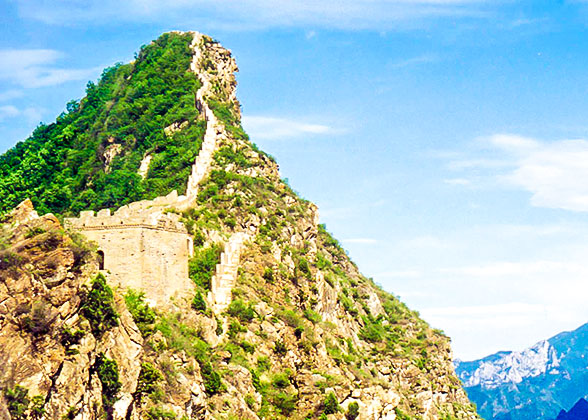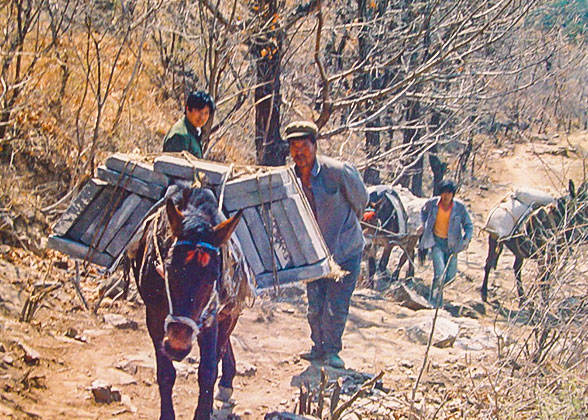How the Great Wall of China was constructed?
2.Get construction materials locally or transport them to the construction sites
3.Construct the wall with different methods in different sites and time periods
How the construction locations of Great Wall were selected?
The construction of the Great Wall lasted more than 2,500 years, and the construction locations varied in different states and dynasties due to the different military situations and topographies.
Generally speaking, the Great Wall was built alongside the boundary lines between different states or between agricultural and nomadic civilization to protect the people and their terrain from invasions. For instance, the Chu State (1115 – 223 BC) built the wall along the boundary line between their own state and the Qi State (1122 – 221 BC), so that they could defend against the invasions from Qi State. In the Qin dynasty (221 – 207 BC), Emperor Qin Shihuang ordered the construction of walls along the boundary line between Central Plain and nomadic nations to protect the terrain from Huns.
 |
| Mountain-Supported Simatai Section |
In order to resist the invasions of those nomadic nations whose cavalries were quite strong, the constructors also took advantages of topographies. Many parts of the Great Wall were built along a mountain ridge, for the sheer mountain ridge could add more defensive value to the wall. Besides, when the wall reached the most danger-ridden cliffs, the builders would stop building the wall and take the cliffs as a natural barrier. This design can be found in many sections such as Simatai and it is called by experts "the mountain-supported wall".
Besides, on the sites which were easier to be captured or frequently attacked like valleys, rivers transition spots or the strongholds on the plain, passes with stronger defensive abilities were generally built. In this case, it could reach the effect that “even if one man guards the pass, ten thousand enemies are unable to get through”. Moreover, the watchtowers and beacon towers were usually built on the high spots to observe the enemy and send the alert massages more easily and clearly.
How was the Great Wall of China constructed?
In the construction process, the workers mainly obtained the materials locally to reduce the workload. For example, the workers usually built the sections on desert by paving a layer of sand and small stone mixtures, and adding a layer of reeds and red willows. Finally, the walls were built layer by layer. They also built the sections along the mountain ridge by piling up the local stones. In addition, there were some materials like sticky rice and bricks conveyed from other places to reinforce the walls.
Due to the entire massive construction project was impossible to control by one person, it was divided into different sections which were managed by different generals. In the Qin Dynasty (221 – 207 BC), the government set twelve counties along the boundary line to build walls in different areas. The following dynasties also continued to use the same method to finish the entire project. The famous General Qi Jiguang of Ming Dynasty (1368 – 1644AD) was once in charge of the construction work near Beijing.
How materials were delivered to the construction sites?
Transport by manpower
Transport by some simple machines and tools
 |
| Donkey Carried Wall Bricks |